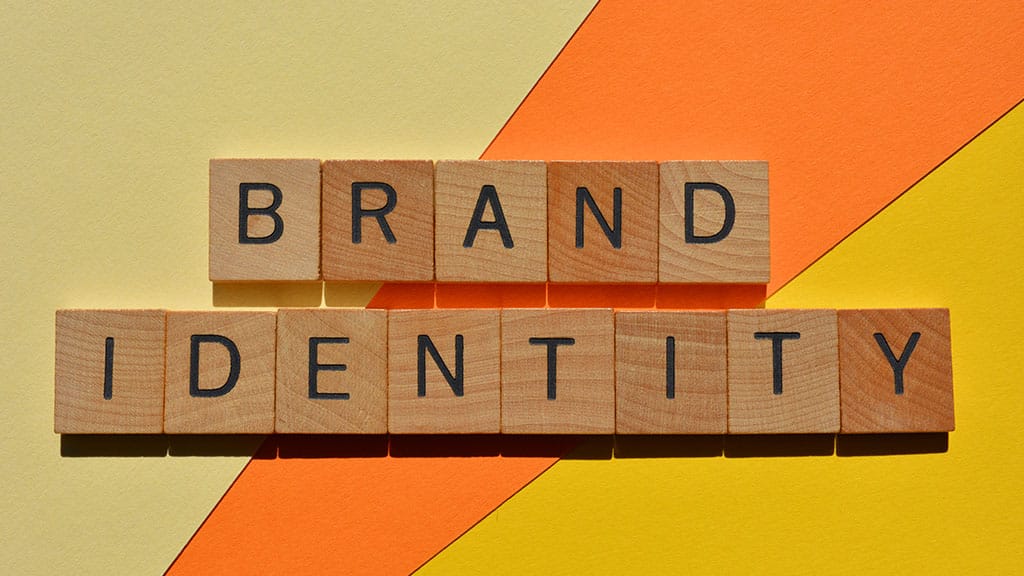Brand Consistency: Why It’s Essential for Your Business Success
Brand consistency is the foundation of a strong and recognizable business identity. It ensures that every customer interaction reflects the same core values, visual elements, and messaging, no matter where or how they engage with a brand. When a company maintains consistency across all platforms—its website, social media, advertisements, packaging, and customer service—it builds trust and credibility with its audience.
In a crowded marketplace, businesses that present a cohesive brand image are more likely to be remembered. Think of globally recognized brands like Apple, Nike, and Starbucks. Their logos, colors, and messaging remain consistent across every touchpoint, reinforcing their identity in the minds of consumers. This consistency creates familiarity, which translates into trust and loyalty over time.
Many businesses underestimate the power of brand consistency and instead focus solely on marketing campaigns or short-term promotions. While marketing is essential for growth, an inconsistent brand experience can confuse customers and weaken long-term relationships. Customers expect reliability, and when they see conflicting messages, varied design styles, or different tones in a company’s communication, it can lead to doubt and disengagement.
By ensuring brand consistency, businesses establish a clear and unified presence that strengthens their reputation. This does not mean a brand must be rigid or never evolve; rather, it should maintain core elements that make it instantly recognizable while allowing for strategic adaptations. A well-defined brand identity, reinforced by consistent visual and verbal communication, is a key driver of long-term success.
The Role of Brand Consistency in Building Trust
Trust is one of the most valuable assets a business can have, and brand consistency plays a major role in earning and maintaining it. Customers are more likely to engage with and remain loyal to brands that deliver a predictable and reliable experience. Every interaction—whether it’s a social media post, an email campaign, or an in-store visit—should reinforce the same brand identity to create a sense of familiarity and dependability.
When a company presents a uniform image across all platforms, it sends a message of professionalism and stability. Customers feel more confident purchasing from a business that appears well-established and organized. On the other hand, inconsistent branding—such as frequent logo changes, varying messaging tones, or disjointed marketing materials—can make a business seem untrustworthy or unfocused.
For example, imagine visiting a company’s Instagram page and seeing a fun, casual brand voice, but then reading an email from the same company with a formal, corporate tone. This inconsistency can make customers question the brand’s authenticity. They may wonder whether they are engaging with the same company or if the brand lacks a clear identity.
Brand consistency also helps businesses establish emotional connections with their audience. When people see the same logo, colors, and messaging over time, they begin to associate those elements with positive experiences and emotions. This emotional bond strengthens customer loyalty and encourages repeat business. Brands that successfully maintain consistency build strong reputations and become trusted industry leaders.
How Brand Consistency Enhances Customer Recognition
One of the biggest advantages of brand consistency is increased customer recognition. People are bombarded with thousands of marketing messages every day, making it difficult for businesses to stand out. A strong, consistent brand helps companies cut through the noise by reinforcing their identity in a way that customers can easily recall.
Repetition is key to making a brand memorable. When consumers repeatedly see the same logo, colors, and messaging, they form mental associations with that brand. Over time, this recognition turns into preference—customers are more likely to choose a brand they are familiar with over one they do not recognize.
Take McDonald’s as an example. The golden arches, red and yellow color scheme, and “I’m Lovin’ It” slogan have remained consistent for years. As a result, people can instantly identify a McDonald’s restaurant or advertisement anywhere in the world. The same principle applies to smaller businesses—maintaining a consistent brand identity helps customers recognize and remember them.
Brand consistency also improves marketing effectiveness. When a brand’s design and messaging are uniform, marketing campaigns reinforce the same identity rather than presenting mixed signals. This ensures that advertising dollars are used efficiently, as each campaign builds on previous brand impressions rather than starting from scratch.
Businesses looking to strengthen their brand recognition should focus on refining and maintaining their core identity. This includes developing a recognizable logo, defining a consistent color palette, and using a unified tone in all communications. Investing in brand strategy services helps ensure that all branding elements work together cohesively, reinforcing recognition and trust with every customer interaction.
By keeping branding consistent across all platforms and touchpoints, businesses create a stronger and more recognizable presence in the market. Customers who easily identify and trust a brand are more likely to engage with it, recommend it to others, and remain loyal over time. Brand consistency is not just a marketing tactic—it is a strategic approach that leads to sustained growth and long-term success.
Key Elements of Brand Consistency
Brand consistency goes beyond just using the same logo across platforms. It involves a combination of visual identity, messaging, and customer experience that work together to create a cohesive brand presence. Each element plays a crucial role in how a business is perceived and remembered by its audience.
The first element of brand consistency is visual identity, which includes the logo, color palette, typography, and design elements. A brand’s visuals should remain consistent across all marketing materials, social media, website design, packaging, and advertisements. Companies like Apple and Coca-Cola are instantly recognizable because they use the same clean, minimalist designs and color schemes across all platforms. When businesses frequently change their logo or visual style, it creates confusion and weakens brand recognition.
Another critical component is brand voice and messaging. The way a company communicates with its audience should be uniform across all channels. This includes social media posts, email campaigns, website copy, advertisements, and even customer service interactions. A brand that uses a professional and informative tone on its website but a playful and casual tone on social media may confuse its audience. Establishing a defined brand voice ensures that every customer interaction reinforces the same brand personality and values.
Finally, customer experience is a key part of maintaining brand consistency. From website navigation to customer support, businesses must ensure that every interaction with their brand aligns with the expectations they have set. If a company markets itself as customer-friendly and responsive but fails to provide timely customer support, it damages trust and weakens the brand. A seamless, consistent customer experience builds confidence and strengthens brand loyalty over time.
Brand Consistency Across Different Marketing Channels
In today’s digital landscape, businesses engage with customers through multiple channels—websites, social media, email marketing, advertisements, physical stores, and more. To maintain a strong brand presence, consistency must be upheld across all of these platforms.
Social media is one of the most dynamic marketing channels, and brand consistency is essential for standing out in an overcrowded space. Businesses should use the same profile images, color schemes, and typography across platforms like Instagram, Facebook, LinkedIn, and Twitter. Additionally, the tone of voice should be consistent, whether responding to comments, creating posts, or launching social media ads. Brands that change their style too frequently risk losing audience engagement and trust.
Websites and digital ads also need to align with brand identity. The colors, fonts, imagery, and messaging used on a website should match other marketing materials. If a customer clicks on an ad with a specific visual and messaging style, only to land on a website with completely different branding, they may feel disconnected and abandon the experience. Consistency ensures a smooth transition between platforms, reducing friction and increasing conversion rates.
Offline branding should not be overlooked. A brand’s packaging, business cards, and in-store experience should all reflect the same identity established online. Companies with physical locations, such as Starbucks and Nike, extend their branding beyond digital marketing to ensure that their stores, uniforms, and promotional materials reinforce the same identity. When online and offline branding align, it strengthens customer trust and solidifies brand recognition.
By ensuring consistency across all marketing channels, businesses create a seamless and professional brand experience. Customers should feel like they are interacting with the same brand, whether they see an Instagram ad, receive an email, visit a website, or walk into a store. This level of consistency leads to increased engagement, customer retention, and brand loyalty.
How Consistency Strengthens Emotional Connection with Customers
Customers don’t just buy products or services; they buy into brands that make them feel something. Emotional connections drive purchasing decisions and long-term loyalty, and brand consistency plays a key role in fostering these connections.
When a brand presents a unified identity across all touchpoints, it reinforces a sense of familiarity and trust. People are naturally drawn to things that feel familiar, and when they repeatedly encounter the same brand elements—colors, logos, messaging, and tone—it strengthens their emotional attachment. Over time, this builds customer loyalty, making it more likely that they will choose the brand over competitors.
Take Apple, for example. Their branding is consistently sleek, minimalist, and innovative. Whether in product design, advertisements, packaging, or retail stores, the experience remains cohesive. As a result, customers develop a deep emotional connection with Apple’s brand, seeing it as a representation of quality, simplicity, and forward-thinking innovation.
Consistency also reinforces brand values. When a brand continuously aligns its marketing, messaging, and actions with its core principles, customers develop a sense of trust. A company that promotes sustainability in its advertising but fails to implement eco-friendly practices internally risks losing credibility. However, a brand that consistently upholds its values, like Patagonia’s commitment to environmental activism, builds strong, lasting relationships with its audience.
Additionally, consistency reduces decision fatigue for consumers. When people are confident in what a brand represents, they don’t have to spend time questioning its reliability. This leads to easier purchasing decisions and repeat business. Customers know what to expect and feel comfortable choosing a brand they trust.
By maintaining brand consistency, businesses create stronger emotional bonds with their audience. These connections lead to increased brand advocacy, word-of-mouth referrals, and long-term customer loyalty. Brands that successfully implement consistency aren’t just selling products—they are building a recognizable and trusted identity that resonates with their audience on a deeper level.
Common Pitfalls of Inconsistent Branding
Inconsistent branding is one of the fastest ways to weaken a business’s identity and credibility. When customers encounter mixed messaging, varied visual elements, or fluctuating brand voices, they can feel disconnected and unsure about what a brand truly represents. Avoiding common pitfalls in branding inconsistency ensures a company maintains trust, engagement, and long-term success.
One of the most frequent mistakes businesses make is changing branding too often. While occasional rebranding or logo updates can help modernize a brand, frequent and drastic changes can confuse customers. If a company constantly updates its logo, color scheme, or messaging without a clear strategy, customers may struggle to recognize the brand. Consistency builds familiarity, and when that consistency is broken, businesses risk losing audience connection.
Another common issue is inconsistent messaging across platforms. A brand might use a fun and casual tone on Instagram while maintaining a formal and corporate tone in email marketing. This inconsistency can make a brand feel inauthentic, as customers may not be sure which version of the brand is the “real” one. Defining a clear brand voice and ensuring all marketing materials align with it helps maintain authenticity.
Failure to maintain visual consistency is another major pitfall. If a company’s website uses one color palette and typography, but its social media posts use entirely different styles, the brand’s identity becomes fragmented. This disconnect can make marketing campaigns less effective because customers do not associate them with the same brand. Establishing clear design guidelines ensures a seamless experience across all touchpoints.
Lastly, not enforcing brand guidelines internally can lead to inconsistency. If employees, designers, and marketing teams are not aligned on branding standards, they may unintentionally create materials that deviate from the brand’s core identity. Regular training and a well-documented brand style guide help keep teams on the same page, ensuring that every customer interaction reflects a unified brand image.
Developing Brand Guidelines for Internal and External Use
A brand style guide is one of the most effective tools for maintaining brand consistency. It serves as a reference document that outlines the key elements of a brand’s identity, ensuring that all marketing efforts remain aligned. Without a structured set of guidelines, brands risk inconsistencies that weaken their overall impact.
A strong brand style guide includes several essential components:
- Logo Usage – Clear rules on how the logo should be used, including acceptable color variations, spacing requirements, and restrictions on modifications.
- Color Palette – Defined primary and secondary colors with exact HEX, RGB, and CMYK codes to ensure uniformity across digital and print materials.
- Typography – Approved fonts for headings, subheadings, and body text, with instructions on spacing and hierarchy.
- Imagery Guidelines – Rules for photography, illustrations, and graphics to maintain a cohesive visual identity.
- Brand Voice and Messaging – A clear outline of the brand’s tone, key phrases, and preferred language style to ensure consistency in communication.
- Application Examples – Visual examples of how branding elements should be used across various platforms, including social media, websites, and advertisements.
A well-documented brand style guide should be accessible to all internal teams and external partners, including graphic designers, content creators, and agencies. When everyone involved in brand communication follows the same guidelines, the company’s messaging remains cohesive and instantly recognizable.
Adapting While Maintaining Brand Consistency
While consistency is crucial, brands must also evolve to stay relevant. The challenge is finding a balance between maintaining a recognizable identity and adapting to changing market trends and consumer expectations. A brand that refuses to evolve may become outdated, but one that changes too frequently risks losing its established audience.
One of the best ways to adapt while maintaining consistency is through subtle brand evolution. Instead of a complete overhaul, brands can refine their existing elements. This may include refreshing typography, adjusting color tones, or modernizing a logo while retaining its core shape and essence. For example, companies like Starbucks and MasterCard have updated their logos over the years without losing their original identity.
Another way to evolve strategically is through flexible branding elements. Some brands use adaptable design systems where the logo, colors, and typography remain the same, but specific campaign visuals or seasonal branding can change. This allows brands to stay fresh and relevant without deviating from their core identity.
Adapting messaging while maintaining a consistent tone is also important. As consumer preferences shift, brands may need to update the way they communicate, incorporating modern language or addressing new audience concerns. However, the overall brand personality—whether it’s playful, authoritative, or sophisticated—should remain unchanged.
Technology and new marketing channels also require brands to adapt. Businesses that started with only print materials now have to ensure their branding is optimized for digital platforms, social media, and mobile apps. The key is to expand into new spaces while maintaining a familiar brand presence.
By evolving strategically rather than making abrupt changes, brands can stay relevant and engaging without losing the recognition and trust they have built over time.
Conclusion: Why Brand Consistency Drives Long-Term Business Success
Brand consistency is more than just a design principle—it is a business strategy that impacts trust, customer retention, and long-term growth. When businesses present a unified identity across all platforms, they strengthen recognition, reinforce credibility, and create emotional connections with their audience.
A well-maintained brand ensures that customers know what to expect, reducing confusion and increasing loyalty. People are naturally drawn to brands that feel familiar, and when they see consistent visuals, messaging, and experiences, they develop a sense of trust. This trust translates into repeat business, positive word-of-mouth, and stronger customer relationships.
By avoiding common branding mistakes, developing clear brand guidelines, and strategically evolving over time, businesses can ensure their brand remains strong and relevant. A brand that remains consistent is more than just a logo or a color scheme—it is a promise to customers that they can rely on the business to deliver the same quality and experience every time.
Companies that invest in brand consistency set themselves apart from competitors. They create a lasting impression that makes their brand memorable, engaging, and instantly recognizable. In an era where consumers are bombarded with endless choices, a strong and consistent brand identity is a powerful tool for standing out and achieving long-term success.







